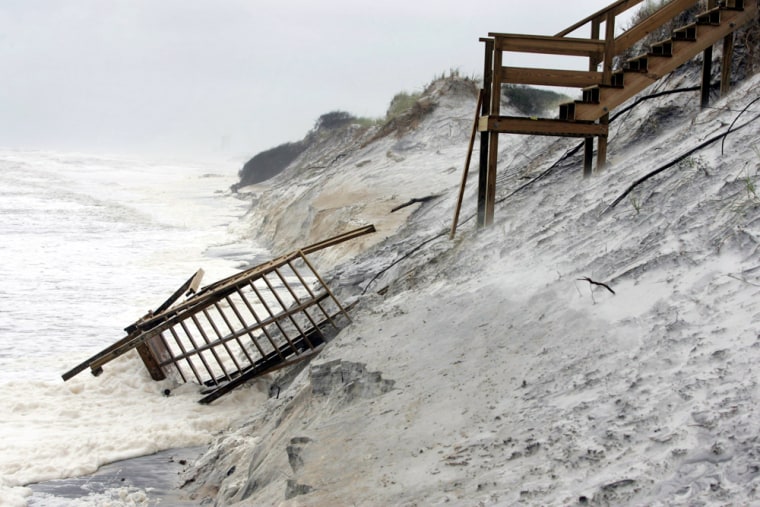When Tropical Storm Arlene was bearing down on the Gulf Coast, Leigh Ann Gill considered escaping. She had just moved into a new house five weeks ago, after her old home was destroyed by Hurricane Ivan last year.
But instead of being in a packed shelter when Arlene breezed ashore Saturday with 60-mph winds, she spent part of the patchy storm in a much more comfortable place — her pool.
“We were freaked out earlier in the week,” said Gill, a resident of the barrier island Perdido Key southwest of Pensacola. “We just started hanging pictures, and then we had to deal with this again.”
As the rainy remnants of Arlene pushed across Tennessee on Sunday, residents in Florida’s Panhandle realized they had avoided serious damage. The Atlantic hurricane season’s first named storm dropped less than 6 inches of rain, temporarily flooded a few roads and caused scattered power outages affecting about 11,000 customers.
“We kind of do feel like it was a real blessing because it wasn’t anything like last year,” said Fred Gund, a 61-year-old accountant. “I just closed my storm shutters and went out to a bookstore. I wasn’t very worried.”
Drowning victim
One person drowned Friday in the rough surf kicked up by Arlene at Miami Beach.
Showers and thunderstorms streamed northward Sunday from western Tennessee through Kentucky into Illinois, Indiana and Ohio. The National Weather Service said there was one report of a tornado touchdown in southeastern Indiana, but there was no major damage. Indianapolis received 3 inches of rain.
What was left of the storm was moving northward at 27 mph and was expected to continue that motion with a gradual turn toward the north-northeast, the National Hurricane Center said.
Back in Florida, Jim Hudgens rode out Arlene with his wife and bedridden mother-in-law in the trailer they now share in Milton, ignoring a call to voluntarily evacuate low-lying areas.
“I think everybody was overreacting to this one,” Hudgens said. “They were going out for gas, emptying the stores. You couldn’t get anything at Wal-Mart.”
Storm called a good test
It nevertheless was good practice nine months after Ivan, said National Weather Service meteorologist Gary Beeler in Mobile, Ala.
“We’ve had enough experience, but it’s a good way to test some things we didn’t do so well in Ivan,” Beeler said. “The inland counties may have heightened their awareness more. ... We know Ivan cleaned their clock.”
Arlene was a typical early tropical storm, “a rainmaker and a little coastal flooding,” he said.
Nearly 5½ inches of rain fell at nearby Hurlburt Field, but the storm wasn’t as big a rainmaker as some spring thunderstorms that drenched the area. April was Pensacola’s wettest month on record at 24.46 inches, Beeler said.
The heaviest reported rain fell 440 miles away in Naples, which got 5.67 inches over the course of the storm. The sprawling storm also dumped 5 inches of rain in Columbus, Miss. Fort Myers got 5 inches, and 4 inches fell in Homestead south of Miami.
Rough surf kicked up by Arlene was blamed Friday in the drowning of a Russian exchange student who was pulled from rolling waves off Miami Beach, more than 525 miles southeast of the landfall point.
While Arlene failed to chase Gill from her pool, a full-blown hurricane is another matter.
“If another Ivan comes through,” she said, “we’re leaving.”
